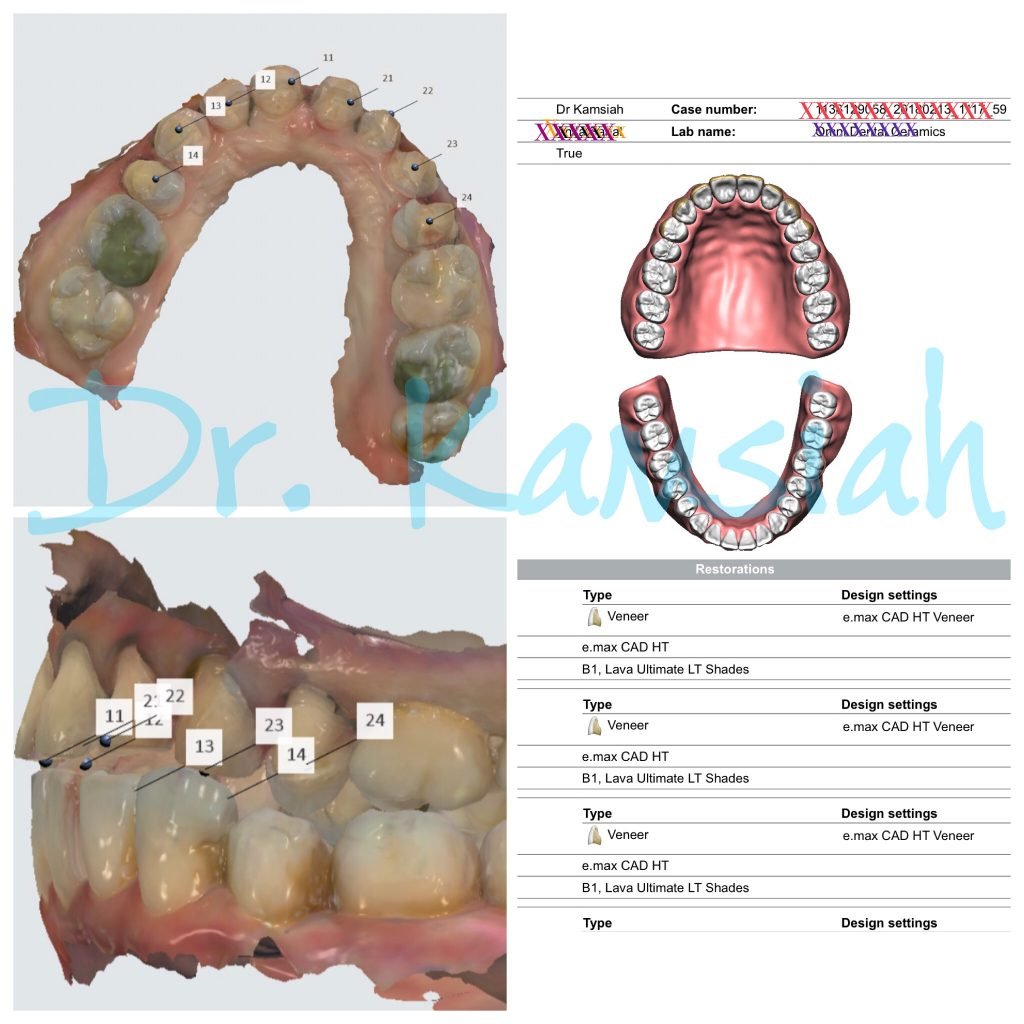WHAT ARE PORCELAIN VENEERS?
Porcelain Veneers or Dental Veneers are very thin “shells” made of either porcelain or composite resin that are bonded to the front surfaces of teeth. The veneers are individually made to match the colour of existing teeth and are designed to fit comfortably on the front of each visible tooth. This results in natural looking results. Usually it’s impossible to tell if someone has veneers; they simply appear to have a beautifully white, even smile.
 The main function of porcelain dental veneers is to improve the visual appeal of visible teeth, hiding stains, chips, unevenness or other imperfections that can look unsightly. Veneers are classed as a cosmetic treatment and may be used as a less invasive alternative to crowns. Once in place, with proper care you can expect veneers to last for decades, providing you with an attractive smile that’s always appreciated. Ideal for anyone that wants their teeth to look amazing, veneers are relatively quick to fit and easy to maintain once in place.
The main function of porcelain dental veneers is to improve the visual appeal of visible teeth, hiding stains, chips, unevenness or other imperfections that can look unsightly. Veneers are classed as a cosmetic treatment and may be used as a less invasive alternative to crowns. Once in place, with proper care you can expect veneers to last for decades, providing you with an attractive smile that’s always appreciated. Ideal for anyone that wants their teeth to look amazing, veneers are relatively quick to fit and easy to maintain once in place.

TYPES OF DENTAL VENEERS
Generally, veneers are made from either porcelain or composite resin (plastic). Porcelain version are generally thinner than the composite version and benefit from enhanced durability. They are also less likely to become stained, retaining their beautiful, natural hue even when exposed to substances such as tobacco, tea or wine.
Composite veneers are usually cheaper than porcelain, but not as strong. Treatment may be required to restore them to their original condition and they’re simple to repair and polish, should any wear and tear occur. This option is best suited for minor aesthetic solutions, such as fillings gaps or improving discolouration. These veneers can be applied in a single visit , to produce stunning results.
What Problems can Dental Veneers Fix?
#Discoloured or stained teeth that will not respond to conventional tooth whitening treatments,
#Minor chips or cracks to teeth, and to replace sections of teeth that have worn away,
#To lengthen or change the shape of teeth,
#To recontoure irregularly shaped teeth.
#To close or minimise gaps in between teeth,
#To correct teeth that are just slightly out of alignment and where it isn’t necessary to have orthodontic treatment.
How to maintain your dental veneers?
You need to take care of your teeth and gums if you want to keep your veneers in top condition.
#Carefully brush your teeth twice a day and floss the right way.
#Avoid chewing on hard items, or using your teeth as a tool to open bottles or any material that puts extreme pressure on your veneers.
Go easy on tough foods, such as hard candy, to avoid potential damage to your veneers.
#Visit your dentist once or twice a year for a cleaning appointment, to remove any tartar from your teeth.
#If you have composite veneers, you need to be careful when eating foods or beverages that stain ( coffee , tea , curry ). Porcelain veneers are more stain resistant.
What are the risks involved?
There are risks and complications involved with any dental procedure. It’s important to understand any potential problems, although they’re unlikely to occur.
Risks include:
#Local anesthetic could trigger an allergic reaction (if used).
Porcelain veneers aren’t easy to remove if you change your mind.
#Thermal changes in your teeth can cause cracking to the veneer over many years.
#Dental decay can occur around the margins of the veneer if you don’t maintain proper oral hygiene.
#Increased sensitivity to hot and cold foods may be a temporary side effect if your dentine is exposed during the fitting.
#A number of factors can contribute to the veneer detaching, such as decay, stress from your bite or improper care.
Porcelain Dental Veneers – Treatment Process
During your initial consultation at our clinic, Dr. Kamsiah will discuss your overall goals and assess your suitability to have Porcelain Veneers fitted.
The next appointment will be to prepare your teeth. Dental veneers are minimally invasive, but it’s usually necessary for Dr Kamsiah to remove a small amount of tooth enamel from the front surfaces of your teeth. This helps ensure the finished appearance is natural and aesthetically pleasing. Once your teeth have been shaped for the veneers, an impression is taken for the dental laboratory to have them customised.



This process generally takes a couple of weeks depending on the number of veneers required and which lab , currently we are into digital labs.

During this time we will protect your teeth with temporary veneers, providing you with a preview of your new smile 🙂 You need to be careful when eating foods or beverages that stain ( tea, coffee and curry ).
The actual Veneers will be fitted during your next visit. It might be necessary to make some minor adjustments to get the fit absolutely precise before they are permanently bonded in position.
